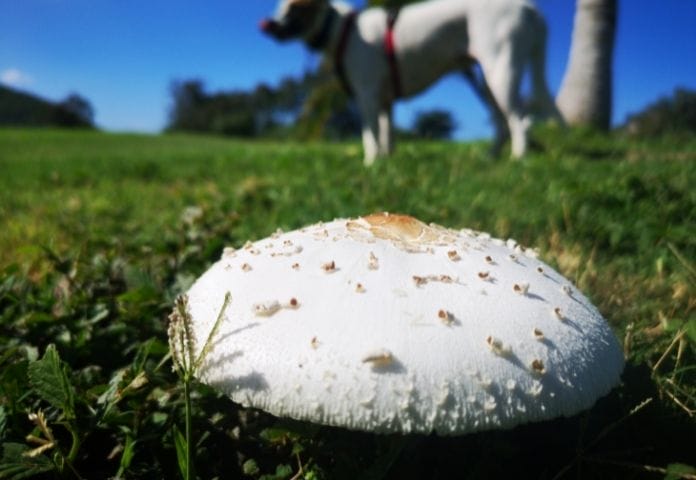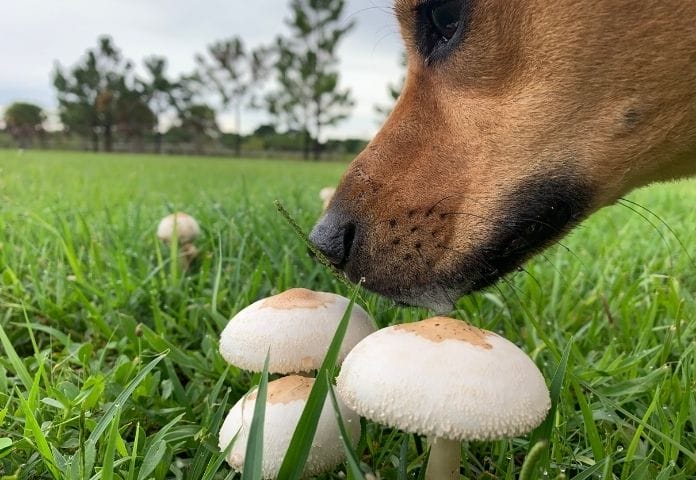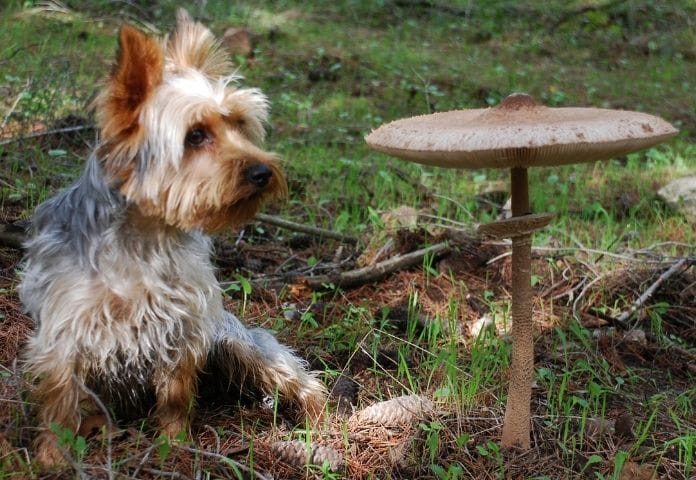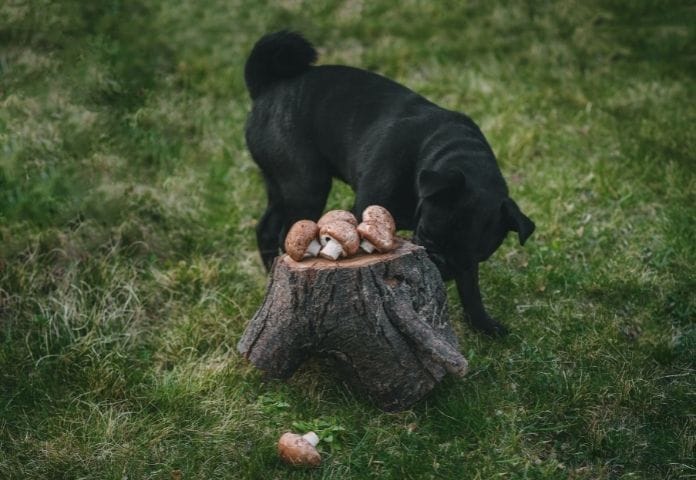After eating poisonous mushrooms from their backyard, a North Carolina dog owner had to put their beloved pet down.
It’s mushroom picking season, and we should be aware of the different kinds of mushrooms. Some could be poisonous for pets and humans as well.
Teresa Gibson of Holly Springs, North Carolina, took her dog Cash to the vet after ingested mushrooms from her backyard. The next day, the family bid farewell as the poor pup passed away due to mushroom poisoning.
How the dog’s poisoning happened
According to Gibson, Cash was a mixed-breed dog who just liked to eat and was characterized as cheerful, friendly, loving, and somewhat “pudgy” from his food-seeking activities.

As any other pet owners would do, Gibson let Cash out into the backyard and discovered that he’d gotten into a patch of mushrooms. Unaware of what kind they were, she immediately took him to the emergency pet healthcare.
On that day, the veterinarian informed Gibson that Cash might experience a severe stomach ache, so she took him home and kept an eye on him.
Cash in Critical Condition
On the following day, Gibson realized something was wrong when she saw the happy and pleasant dog “moving around very slowly.”
It wasn’t his usual self as she saw her pup getting weak with his legs getting wobbly and suddenly collapsed.

Veterinarians reexamined cash at the hospital. His liver was failing due to the toxins in the mushrooms, and they decided that he would have to be put down.
Gibson didn’t get her hopes too high for Cash, but maybe her story can help other dog parents out there to be aware of how fatal a mushroom could be to dogs.
What do toxic mushrooms look like?
Some mushrooms that look like the umbrella kind could have poisonous fungi hidden under them. Other mushrooms could look different as well.
There are a variety of mushroom species, each with its own set of characteristics, making it difficult to identify its kind.

If you’re not a “mushroom expert,” it’s best to assume that any mushroom you spot might be deadly.
If you want to avoid all poisonous mushrooms, it’s also best to research which ones are deadly to pets.
What To Do If You Suspect Your Dog Ate Poisonous Mushrooms
The Gibson family lives in North Carolina, where nine of the most poisonous mushrooms grow.
Dr. Anusha Balakrishnan, of Triangle Veterinary Referral Hospital in Holly Springs, mentioned that mushrooms such as the Autumn Skullcap, the Chlorine Lepidella, and any from the Amanita family are all critical to staying away from.
To help with identification, bring a mushroom specimen with you to the emergency hospital.
Lynn Buzhardt, DVM
Symptoms of Mushroom Poisoning
The symptoms of mushroom poisoning in dogs differ depending on the kind of fungus consumed.
If you’ve seen your pet consume a wild mushroom, do not wait for the symptoms to appear. Call your emergency veterinarian or the ASCPA Poison Control Hotline (888) 426-4435 to get help and set the wheels in motion for obtaining your dog the treatment they need.

Common symptoms are as follows:
- Diarrhea
- Seizures
- Vomiting and abdominal pain
- Lethargy
- Weakness and loss of motor control
- Jaundice
- Coma and death
Dr. Balakrishnan also advised that you can induce vomiting in your dog by spritzing them with hydrogen peroxide if they have eaten a mushroom.
The American Kennel Club backs this strategy and recommends using no more than a 3 percent concentration with a turkey baster or feeding syringe.
***
There are many ways you can help protect pets like Cash if they happen to eat any type of mushroom in your yard or neighborhood by taking steps such as making sure all toxic plants are removed or even planting non-poisonous alternatives instead. Hence, there’s no chance of accidental ingestion.
We hope this blog post has given something useful for pet owners who care deeply about their four-legged friends.
- Everything You Need to Know About Silver Grey Dorking Chicken Breed - June 28, 2022
- 5 Reasons Why Cats Tuck Their Paws - June 28, 2022
- 60+ Names Meaning ‘Panda’: The Best Names for Your Baby Panda - June 28, 2022


GIPHY App Key not set. Please check settings